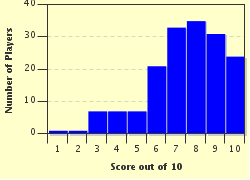Quiz Answer Key and Fun Facts
1. This morning, I had to get up at a certain time in order to be where I needed to be when I needed to be there. Unfortunately, I can sleep right through the sun rising, and I own no rooster. That morning, I wanted to thank the French inventor Antoine Redier for his contribution.
What did he patent?
2. Putting on my Levi jeans in the morning, I realized how wonderful underwear is; jeans would be so uncomfortable without.
Which of these undergarments was created by Arthur Kneibler, and are known for the "Y Fly"?
3. After donning my outfit, I had to clean my mouth, because it felt quite dirty. Though the device had been around for centuries before 1857, it was then that H. N. Wadsworth patented the cleaning tool in the US. When I cleaned my mouth this morning, I gave him a silent thank you; that was a crisis averted.
Just what did he patent (though not invent)?
4. Packing my lunch for later that day, I silently thank Otto Frederick Rohwedder for his invention. I don't necessarily use his machine, but it started a trend that helped making sandwiches much easier and quicker, and I am grateful for his invention.
What did he invent?
5. After making a sandwich, I needed to pack a drink to go along with it. I grabbed a Coca-Cola, and silently thanked two inventors for the delicious beverage. Of course, many know John C. Pemberton invented Coca-Cola, but it could not have been created without Joseph Priestley's invention of 1767.
Which of these did he invent?
6. After making my lunch, I had to use the restroom. I thanked Joseph Gayetty after I finished for without him, my favorite toiletry may not have so easily attainable. After using his paper product, I washed my hands and headed out the door.
This product became commercially available in 1857, when Gayetty invented modern-day what?
7. Before I actually left the house, I remembered that I had yet to shave. I ran back inside and shaved in just a few quick minutes, and did not lose much time in the process. I thanked King C. Gillette as I shaved, because without his invention, I would have taken much longer and been late for my appointment.
What did he invent that revolutionized the shaving industry?
8. My appointment was 20 miles away, so I always like to thank the inventor of the modern automobile for making it so much quicker and easier for me to get to my destination.
It is often acknowledged that Henry Ford was the inventor of mass car production, but that does not necessarily mean he created the first automobile. Which of these is credited as being the first modern automobile?
9. I was required to eat breakfast before I arrived at my appointment, so I was very thankful to Stanley Mason for inventing a quicker way for me to eat my morning meal. Without him, it would have been easy to be late; preparing breakfast was not in my time budget this morning.
Stanley Mason is credited with creating many things, but which of his inventions may have been the most practical for my morning breakfast plans?
10. Finally arriving at my appointment, I had become nervous and excited. I thanked Gholam A. Peyman for his 1989 patent; and the reason I was at this appointment. Peyman had patented an invention that would greatly improve the effectiveness of a certain facial feature, and I would no longer need to wear special corrective devices for improving my natural ability.
Which of these facial features is improved using Peyman's device?
Source: Author
salami_swami
This quiz was reviewed by FunTrivia editor
bloomsby before going online.
Any errors found in FunTrivia content are routinely corrected through our feedback system.


